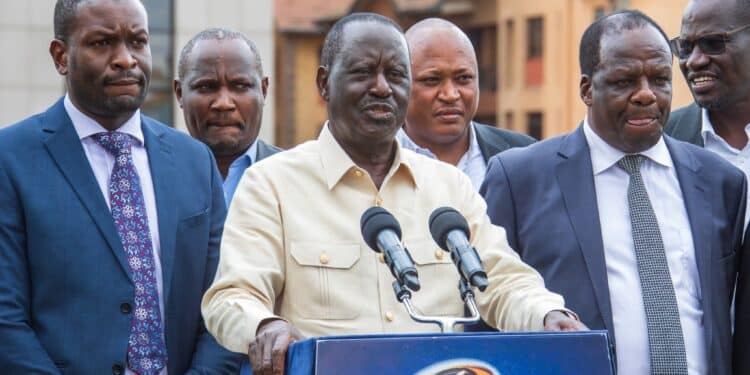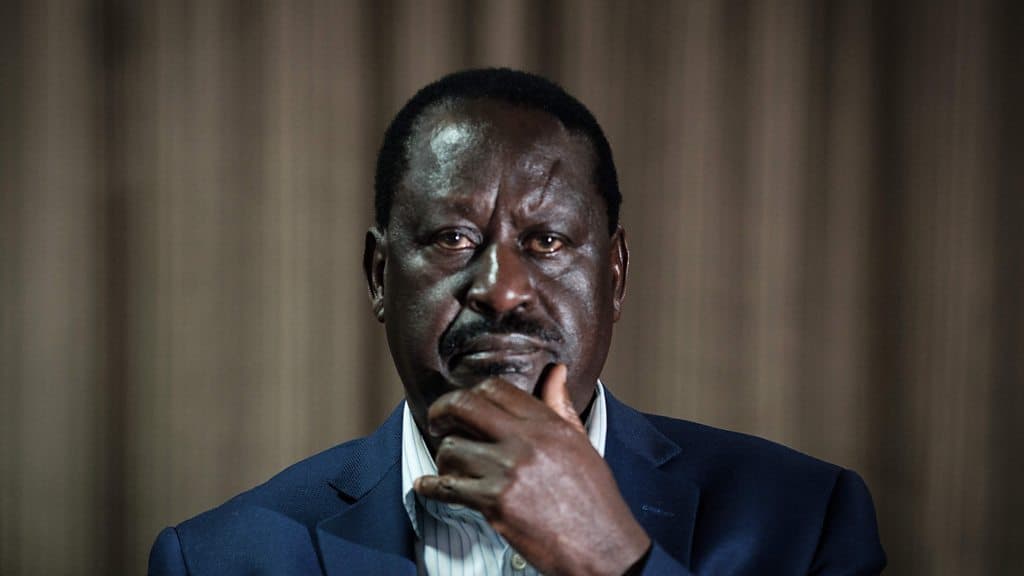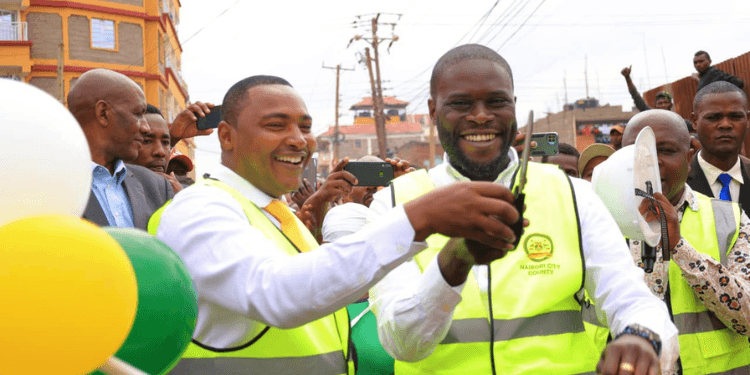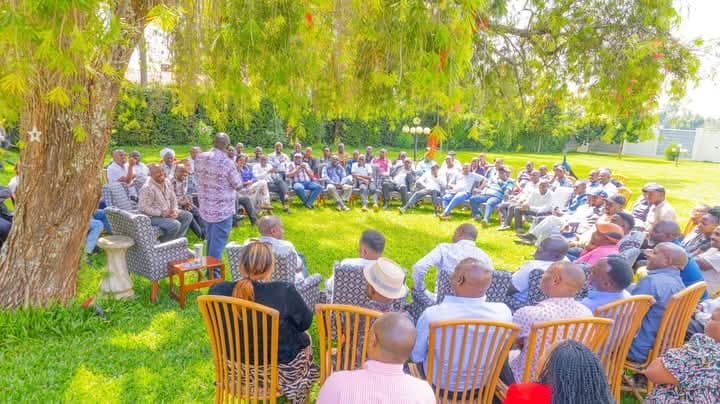Veteran opposition leader Raila Odinga, on February 2023, announced to his supporters that they would March to the State House in 10 days, over the country's cost-of-living crisis, uneven distribution of state jobs and alleged electoral injustices from the 2022 Presidential Election.
The Former Prime Minister, addressing supporters in Trans Nzoia, encouraged protesters to come in large numbers and March against the government of President William Ruto.
The opposition leader had months earlier narrowly lost his fifth tilt at the presidency in the August poll despite being backed by former president Uhuru Kenyatta.
“When we call you, will you come to Nairobi? Will you come? Will you come? Again, I want you not to have fear or worry. We understand each other very well, and we will continue to understand each other well. We will make a big impression, and you will come,” he said.
At the time, the former Prime Minister issued a 14-day ultimatum to President Ruto, demanding action on the high cost of living and alleged electoral injustices. This ultimatum was set to expire on March 8, 2023.
Odinga, demanded for the opening of election servers and an audit of the 2022 general election results by an independent, reputable firm, insisting he was rigged out' of a win.
The Former Prime Minister also decried the high cost of living, noting that the government was subjecting Kenyans to unfair taxation policies.
Odinga was also frustrated by President Ruto’s appointment of several Cabinet Administrative Secretaries (CAS), arguing that this created an unnecessary burden on taxpayers who were already facing higher taxes.
“We state categorically that this is not the time to create offices and positions for Kenya Kwanza political rejects and crooks,” Raila stated.
Consequently, Odinga called for a march to the State House with his supporters to present their grievances to the President.
However, on March 20, 2023, the date Odinga and his supporters were supposed to march to the State House, the government’s plans thwarted their efforts.
A heavy contingent of police officers was deployed in Nairobi, particularly around key areas like the Central Business District (CBD) and routes leading to the State House. Anti-riot police and General Service Unit (GSU) officers were stationed to block protesters from advancing toward the highly secured government installation.
Tear gas and water cannons were used to disperse crowds in Nairobi’s CBD and other areas where Azimio supporters gathered, preventing them from organizing a cohesive march toward the State House.
Major roads leading to the State House, such as State House Road and Dennis Pritt Road, were barricaded by police, and security checkpoints were established to restrict access.
However, Raila Odinga’s protests ultimately led to the formation of the National Dialogue Committee and the creation of the NADCO report to address the opposition’s demands.
In the wake of Odinga’s working agreement with President Ruto, young Kenyans have since assumed the opposition role.
A year ago, the reality of Kenyans rising against punitive economic challenges seemed farfetched – let alone the idea of young people being able to meaningfully organise and participate in political processes.
However, the contested Finance Bill of 2024 triggered unforeseen countrywide demonstrations to protest the finance bill, a punitive piece of legislation which sought to raise revenue of KES 3.7 trillion through taxation and acquisition of additional public debt.
Unlike the long history of the political elite-led demonstrations, the nationwide protests were led and headed predominantly by young people, known as Generation Z (Gen-Z) – those born in the late 90s and early 2000s – who demanded rejection of the finance bill.
Over time, these demands evolved to decry the state of corruption, escalating public debt, accountability, impunity, incompetence, cronyism and wastage of public resources in both the executive and legislative arms of government.
The June 2024 protests in Kenya', were different compared to protests held before. First, they were organic in the sense that they were not instigated by sectarian interests. Unlike in the past when protests were organised by the political elite, sections of civil society, and trade unions, these protests were inspired by crosscutting concerns about the sorry state of the Kenyan economy, unresponsive politics, decrepit and classist education and health sectors, and extrajudicial and summary killings and enforced disappearances. The protesters were united across ethnic, regional, gender, religious and other fault lines that have in the past impeded Kenyans from collectively holding the government to account over state excesses.
President Ruto dismissed the cabinet in the wake of the protests but subsequently reappointed some of the cabinet secretaries back and absorbed others in the bureaucracy. A common thread amongst youth led protests on the African continent is the demand for good governance. Ideally democracy enables the rule of law, accountability, human rights, and constitutionalism.
The Kenyan government needs to respond to the grievances precipitated by the recent protests because it cannot count on brute force by the police to quell simmering discontent and mass uprisings owing to a depressed economy. These mass uprisings could easily spiral out of hand. As such, going into the future, Kenya and other African governments will witness more discontent among restive young populations unless governments function optimally to address political exclusion, poverty, inequalities, and unemployment.
Young people demand dividends of democracy in the form of accountability, the rule of law, jobs and access to quality education and healthcare for all and prospects for the future.
Kenya’s Gen Z has resolved to overhaul the exclusive and extractive colonial state and Kenya’s political culture attuned to impunity, corruption and divisive ethnic politics. In its stead, they are fostering a pan-Kenyan identity that transcends primordial forms of political mobilisation and centre crosscutting mass mobilisation for a viable democracy and society.
The political elite, however, is against this reimagination of the Kenyan state and society thus excessive force by the police and other security apparatus against protesters.
It is also important to note that over 8 million voters did not participate in the 2022 general election, a majority of whom were young voters. However, with this momentum, we are likely to see more young people take an active role in electoral politics. This could tip the balance in the general elections in 2027.







